
ski sizing guide
Selecting the right ski size is crucial for optimal performance and control on the slopes. Properly fitted skis enhance stability, turning ease, and overall skiing enjoyment.
Understanding key considerations like height, weight, skill level, and skiing style ensures a perfect match, making every run more enjoyable for all skiers.
Why Proper Ski Size Matters
Proper ski size is essential for optimal performance, control, and safety on the slopes. It ensures better maneuverability and stability, making skiing more enjoyable; Skis that are too long can be difficult to handle, especially for beginners, while skis that are too short may lack stability at higher speeds. The right size enhances turning ease and balance, reducing the risk of falls. It also allows skiers to adapt to various terrains and conditions, whether carving on groomed slopes or floating in deep powder. Ultimately, correct sizing maximizes efficiency and fun for all skill levels.
Basic Ski Measurements: Length, Width, and Profile
Ski sizing begins with three key measurements: length, width, and profile. Length affects stability and control, with shorter skis offering easier turning and longer skis providing speed and float. Width determines performance in different snow conditions, with narrower skis excelling on groomed trails and wider skis handling deep powder. The profile, including rocker (upward curve) and camber (downward curve), influences how skis interact with the snow, impacting responsiveness and versatility across various terrains.
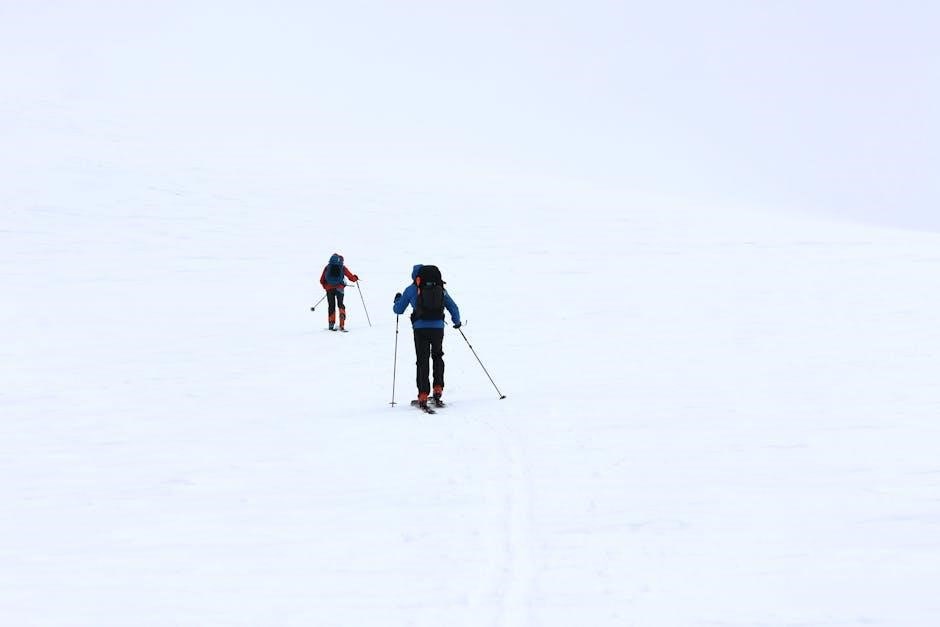
Key Factors Influencing Ski Size
Height, weight, skill level, and skiing style are the primary factors determining ski size. These elements collectively influence the ideal ski length and width for optimal performance.
Height and Weight: How They Impact Ski Length

Height and weight are critical in determining ski length, as they affect balance and control. Taller skiers generally require longer skis for stability, while shorter skiers benefit from shorter skis for easier handling. Similarly, weight influences ski performance; heavier skiers may need stiffer, longer skis to maintain control, whereas lighter skiers can opt for shorter, more maneuverable skis. These guidelines help tailor ski length to individual physical characteristics, ensuring optimal performance on the slopes.
Skiing Skill Level: From Beginner to Advanced
Skiing skill level significantly impacts ski length recommendations. Beginners benefit from shorter skis, which are easier to control and maneuver, fostering confidence and skill development. Intermediate skiers often prefer mid-length skis for stability and versatility across various terrains. Advanced skiers can handle longer skis, enabling higher speeds and precise turns. Tailoring ski length to skill level ensures better performance, control, and overall enjoyment on the slopes, whether carving groomers or exploring off-piste adventures.
Skiing Style: Carving, All-Mountain, or Powder
Skiing style plays a crucial role in determining the ideal ski size. Carving skis are shorter and narrower, enabling quick, precise turns on groomed trails. All-mountain skis are mid-length and width, offering versatility for various terrains. Powder skis are longer and wider, providing floatation in deep snow. Matching ski size to your style ensures optimal performance and enjoyment, whether carving through corduroy or exploring untouched powder.
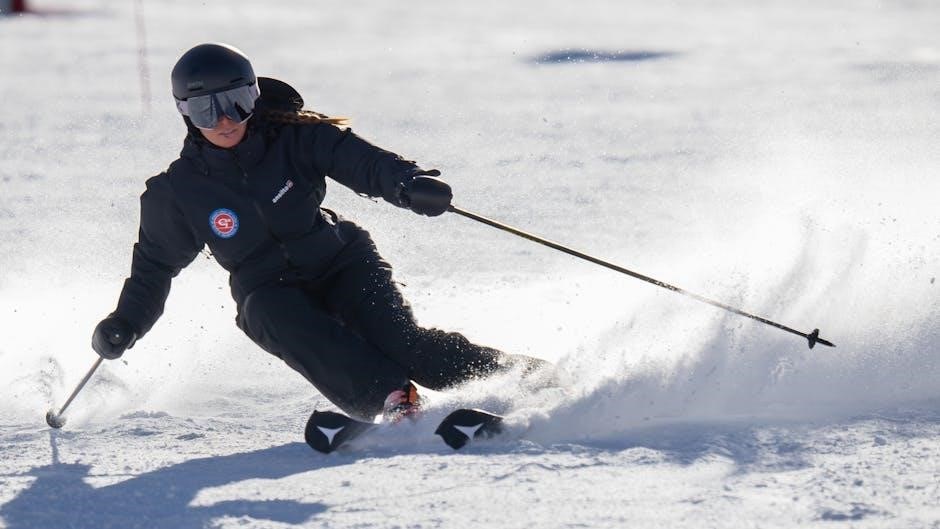
Different Types of Skis and Their Sizing
Skis vary by type, with sizing tailored to specific needs: all-mountain skis offer versatility, powder skis float in deep snow, and carving skis deliver precision turns.
All-Mountain Skis: Versatility and Size Recommendations
All-mountain skis are designed for versatility, excelling in various terrains from groomed trails to off-piste conditions. Their size typically ranges from 160cm to 190cm, depending on height and weight. For most skiers, a mid-length ski (around 170cm to 180cm) offers a balanced blend of maneuverability and stability. Practical tips include using a ski size calculator and considering skill level. Proper sizing ensures optimal performance and ease of use across diverse skiing environments.
Powder Skis: Longer and Wider for Deep Snow
Powder skis are designed for deep snow, featuring longer lengths and wider waist widths to enhance floatation and ease of turning. Typically ranging from 180cm to 200cm, their size depends on height, weight, and skiing style. Wider skis (over 110mm waist) excel in deep powder, offering better buoyancy and control. Proper sizing ensures effortless gliding and maneuverability in off-piste conditions, making them ideal for adventurous skiers seeking thrill in untouched snow. Use a size calculator to find the perfect balance for your powder adventures.
Carving Skis: Shorter and Narrower for Precision
Carving skis are crafted for precision, featuring shorter lengths and narrower waist widths to facilitate sharp, controlled turns. Ideal for groomed slopes, they typically range from 165cm to 185cm, with waist widths around 70-85mm. Their shorter size enhances agility and quick edge-to-edge transitions, while camber profiles boost responsiveness. Perfect for skiers favoring aggressive, technical turns, carving skis deliver exceptional accuracy and performance on hardpack snow, making them a top choice for those prioritizing precision and control in their skiing experience.
Racing Skis: Performance and Exact Fit Requirements
Racing skis prioritize speed and precision, typically ranging from 170cm to 185cm in length, with narrow waist widths (65-70mm) for quick edge engagement. Designed for advanced skiers, they require an exact fit to optimize performance. Stiff flex enhances stability at high speeds, while precise sizing ensures responsiveness. Ski size calculators are crucial for determining the ideal length and width, ensuring a perfect balance of power and control for competitive skiing. Proper fit is essential for maximizing speed and accuracy on the racecourse.

Ski Sizing for Women and Children
Women’s and children’s skis require tailored sizing for optimal performance. Women’s skis are often lighter, with specific flex patterns, while children’s skis prioritize ease of handling and growth accommodations.
Women’s Ski Sizing: Specific Considerations
Women’s ski sizing focuses on lighter materials and tailored flex patterns to match female skiers’ needs. Skis are designed to accommodate lower body mass and center of gravity.
Length and width are adjusted to ensure optimal performance and control, with shorter, narrower skis often recommended for easier maneuverability and responsiveness on various terrains.
Kids’ Ski Sizing: Growth and Development Factors
Kids’ ski sizing prioritizes growth and ease of use, with shorter skis recommended for better control and maneuverability. Lengths are tailored to their height, weight, and skill level.
Lightweight materials and flexible constructions are key, ensuring skis are easy to handle. Youth skis often feature softer flex patterns to accommodate developing strength and technique, promoting confidence and progress on the slopes.
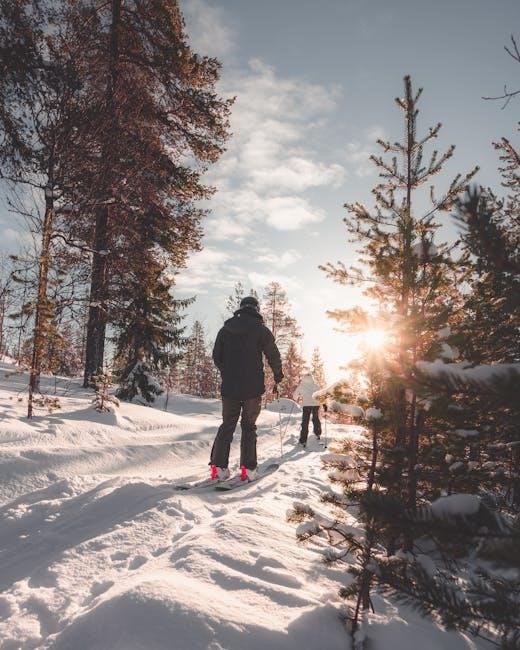
Advanced Ski Technology and Sizing
Modern ski technologies like rocker profiles and waist widths significantly impact sizing decisions, offering enhanced performance tailored to specific skiing styles and snow conditions.
Rocker Profile: How It Affects Ski Length and Performance
The rocker profile, or the upward curve of a ski’s tip and tail, significantly influences performance and sizing. A more pronounced rocker enhances maneuverability in deep snow and ease of turning, especially for beginners. However, it can reduce the effective edge length, impacting edge hold on hard snow. Skis with rocker technology may allow shorter lengths for better agility while maintaining float in powder. This innovation tailors ski performance to specific skiing styles and terrain preferences, optimizing the overall experience.
Waist Width: Finding the Right Balance for Your Needs
Waist width, the measurement at the ski’s narrowest point, plays a crucial role in performance. Narrower widths (70-85mm) excel on groomed trails, offering precision and quick turns. Wider widths (90-110mm) provide float in deep snow, ideal for powder skiing. Mid-width skis (85-95mm) strike a balance, catering to all-mountain versatility. Choosing the right waist width ensures optimal edge hold, stability, and maneuverability, tailoring the ski’s performance to your preferred terrain and skiing style for a more enjoyable experience on the slopes. Proper fit enhances control and responsiveness, making every run more enjoyable.

Practical Tips for Choosing the Right Skis
Use a ski size calculator to find your ideal length and width based on height, weight, and skill level. Consider your skiing style and terrain preferences for the best fit.
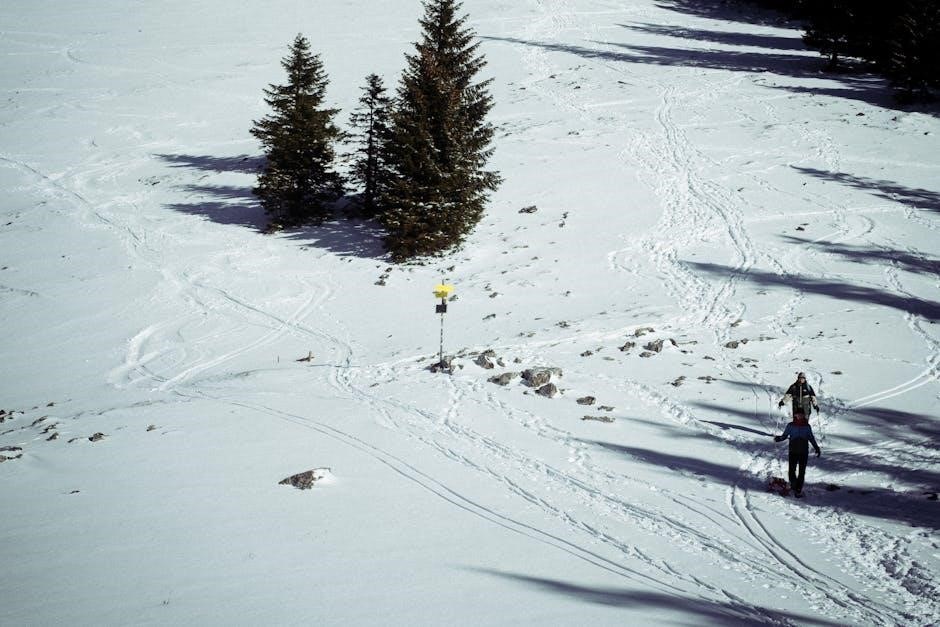
Try before buying to ensure comfort and performance. Professional fitting ensures proper boot and binding compatibility, enhancing your overall skiing experience and confidence on the slopes.
How to Use a Ski Size Calculator Effectively
Enter accurate height, weight, and skill level to get personalized ski length recommendations. Select your skiing style and preferred terrain for precise results. Consider boot size and binding compatibility for a seamless fit. Review the suggested length and width, then compare with in-store options. Always test skis if possible, as calculators provide a starting point but personal feel matters. This approach ensures a balanced blend of performance, comfort, and control for your skiing experience.
Trying Before Buying: The Importance of Fit and Feel
Testing skis in person ensures they match your skiing style and preferences. Even with calculator recommendations, physical feel matters. Try skis on snow to assess handling, stability, and responsiveness. Check how they perform in your preferred terrain, whether groomed runs or powder. Compatibility with boots and bindings is also crucial. Ski a few runs to gauge comfort and control. This hands-on approach guarantees the best fit, enhancing your overall skiing experience and satisfaction.
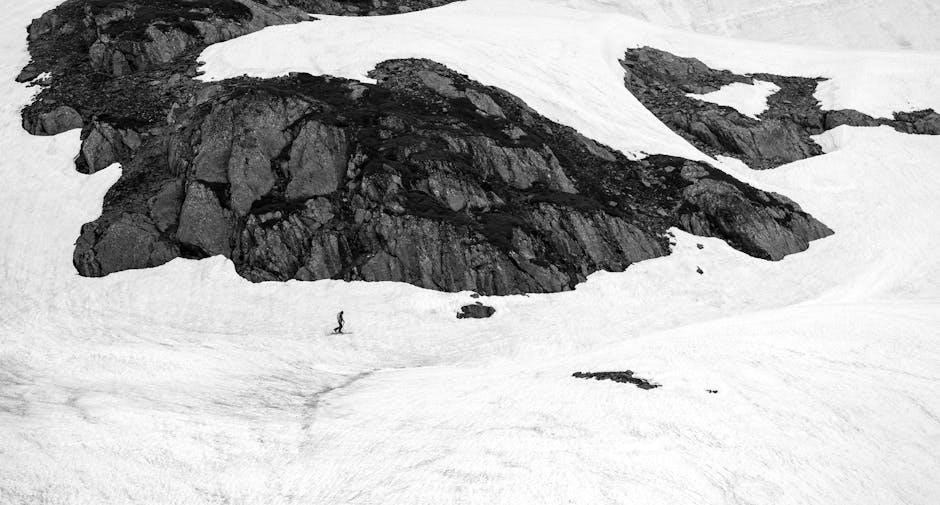
Frequently Asked Questions
Common queries include determining ideal ski length, understanding waist width, and addressing fit issues. FAQs provide clarity on sizing, technology, and troubleshooting for all skier levels and needs.
Common Misconceptions About Ski Sizing
Many believe ski size is determined solely by height, but weight, skill level, and style also play crucial roles. Another misconception is that shorter skis are always easier for beginners, which isn’t true for all cases. Some think wider skis are only for powder, but they can also enhance stability on groomed trails. Additionally, rocker profiles are often misunderstood, as they affect performance differently based on terrain. Correcting these myths ensures a better fit and improved skiing experience for all levels and preferences.
Troubleshooting: When Your Skis Don’t Feel Right
If your skis feel too long or short, unstable, or difficult to control, it may indicate improper sizing. Difficulty turning or lack of responsiveness could signal skis that are mismatched to your height, weight, or skill level. Check if your bindings are correctly adjusted, as improper alignment can also affect performance. Consider consulting a professional fitter to ensure your skis are the right size and setup for your needs, optimizing both comfort and control on the slopes.